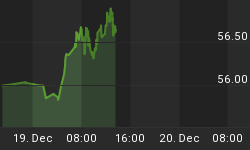The following is part of Pivotal Events that was published for our subscribers January 25, 2018.
Signs of The Times
"New Survey Reveals Staggering Number Of People Are Buying BitCoin On Their Credit Cards"
- Zero Hedge, January 12.
"Why Is Liberal California The Poverty Capital Of America?"
- LA Times, January 14.
"Some South Africans Are Going Bankrupt Buying Cryptocurrencies"
- OkayAfrica.com, January 17.
"Year after year, the stock market has roared ahead, driven by the Federal Reserve's excessively easy monetary policy."
- Martin Feldstein, WSJ, January 16.
"China's home sales surged to a record high last month, despite a prolonged government campaign to curb property speculation."
- Bloomberg, January 18.
"China Orders State-Run Companies to Make Profits"
- Bloomberg, January 23.
"A small and transitory overshoot of 2% inflation would not be a problem."
- William Dudley, Pres. NY Fed, Bloomberg, January 19.
"Bitcoin May Split 50 Times in 2018 as Forking Craze Mounts"
- Bloomberg, January 23.
Perspective
Dudley at the NY Fed is focused upon CPI inflation when inflation in stock prices is passing the moon. One measure is momentum and the Weekly RSI on the DJIA is up to 91 (no typo). On the extraordinary Dot-Com mania that climaxed in March 2000, the big action was in the Nasdaq, and the Weekly RSI topped out at 84 (also no typo).
Then there has been the Bitcoin Bubble, which price gains have been the biggest ever.
"Forking" is the term for the equivalent of a stock split.
The ChartWorks registered a Sequential (13) Sell on Bitcoin on December 19th. We noted on the 21st that this was the first such signal in two years and that the correction could be the most significant in two years. Our historical side is wondering if the top is in? Time will tell.
And Fed people are noting that it would not be troublesome if CPI inflation goes a little above 2 percent. They have been trying to boost it up to 2 percent. Why? Because they think that if 2% can't be maintained there will be deflation and that could force another Depression.
The supreme irony is that severe contractions that can be called Depressions have only followed the climax of every great financial bubble. That's since the first one -- the South Sea Bubble of 1720.
Headlines from China record remarkable bureaucratic folly. Some policymakers have been trying to talk the housing boom down. Others are commanding that state-run companies "Make Profits". As the Nikkei was climaxing in December 1989, some policymakers were talking the boom down. On the first hard break, they clamored to "reduce margin requirements".
Absolute madness out there. Both in private financial affairs and in policymaking.
How long can it continue?
The irony is that from central bankers to journalists; from fund managers to financial analysts no one can question the durability of the bull market. Do that and credibility goes out the window. Essentially, one way or another "everyone" is committed or complacent.
However, there are some new technical accomplishments. Big picture ones.
The January 14th ChartWorks reviewed the "ADX", which measures the strength of the trend, and for the DJIA at 64 it is the highest on the 115-year record.
The January 23rd. ChartWorks noted that the DJIA is approaching a Fibonacci target at the 26,500 level. This is based upon the significant swings since the calamity ended in 2009, which basically met Fibonacci numbers.
Can the action become more extreme? Well, one number is the best in 115 years and the other has been building for almost 9 years.
The key question is how long can the buying frenzy be sustained?
That's for the venerable but now extreme DJIA.
Then there are the higher-flyers such as the Pot Stocks.
Link to January 26, 2018 Bob Hoye interview on TalkDigitalNetwork.com: https://www.howestreet.com/2018/01/26/equity-markets-have-taken-on-a-life-of-their-own/
Listen to the Bob Hoye Podcast every Friday afternoon at TalkDigitalNetwork.com















